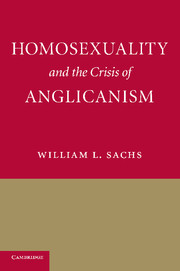Book contents
- Frontmatter
- Contents
- Acknowledgements
- 1 A definitive moment
- 2 The shape of early Christian unity
- 3 When ideals encounter realities
- 4 Reform and the power of the periphery
- 5 Anglican tradition and local prerogative
- 6 The triumph of indigenous Anglicanism
- 7 The rise of Liberalism
- 8 In search of the pure church
- 9 Beyond warring parties?
- Index
- References
8 - In search of the pure church
Published online by Cambridge University Press: 05 June 2012
- Frontmatter
- Contents
- Acknowledgements
- 1 A definitive moment
- 2 The shape of early Christian unity
- 3 When ideals encounter realities
- 4 Reform and the power of the periphery
- 5 Anglican tradition and local prerogative
- 6 The triumph of indigenous Anglicanism
- 7 The rise of Liberalism
- 8 In search of the pure church
- 9 Beyond warring parties?
- Index
- References
Summary
PATTERNS OF SEPARATION
An American parting
Liberalism turned toward Progressivism as it lost faith that society would someday embody the Kingdom of God. The devastation caused by World War I and later economic, social, and political crises in the global North transformed Liberalism's optimism. Instead the emerging progressive outlook sought glimmers of the Kingdom in the experiences of those society had devalued and found renewed purpose for the church in creating hospitable space for them. If society could not resemble God's eventual Kingdom, then the church must do so. Uplifting the experiences of particular groups in society, the church would model what the larger world must be, and would be faithful to its calling. The progressive intention became a natural extension of the Liberalism that had defined church life. But far from securing God's Kingdom, Progressivism encouraged church divisions along ideological lines.
If war and social crisis eroded the old Liberalism and advanced Progressivism's rise, another kind of sober awakening jolted conservatives and elicited the rise of a new, activist Traditionalism. In October 1868, not quite two years after being consecrated assistant bishop in Kentucky, George David Cummins attended the General Convention of the Episcopal Church. What he saw there shocked him. Upon entering the New York church where the Convention would worship Cummins saw on the altar a brass cross three feet high as he estimated it, and two brass candlesticks of similar height.
- Type
- Chapter
- Information
- Homosexuality and the Crisis of Anglicanism , pp. 194 - 219Publisher: Cambridge University PressPrint publication year: 2009



